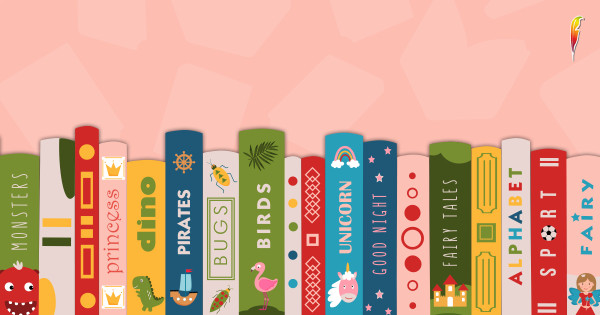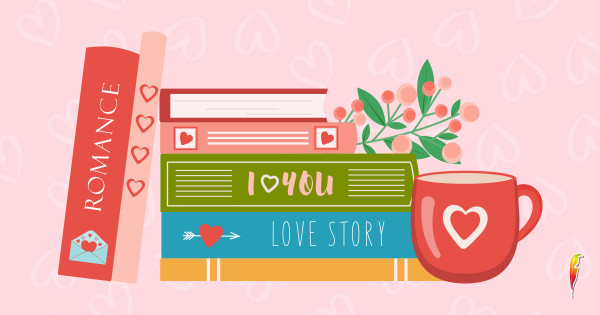Why Choose Hybrid Publishing Over Traditional Publishing
In the ever-evolving landscape of the publishing industry, authors now have more options than ever when it comes to bringing their literary creations to life. One such option that has gained significant traction in recent years is partnership or hybrid publishing. This innovative approach combines elements of both traditional and self-publishing, offering authors a unique blend of control, support, and creative freedom. In this blog post, we'll delve into the world of partnership/hybrid publishing, highlighting its benefits, key differences from traditional publishing, how to navigate the publishing process effectively and share some successful publishing stories.
Understanding Traditional Publishing
For decades, traditional publishing has been the gold standard for authors seeking wide distribution, professional editing, and expert marketing support. However, the traditional route comes with its own set of challenges. Authors must navigate the daunting task of pitching their work to literary agents or publishers, hoping to secure a book deal that includes an advance against royalties. While traditional publishing offers the allure of legitimacy and wide exposure, it often entails long waiting periods, potential rejections, and a loss of creative control over various aspects of the book.
Introducing Partnership/Hybrid Publishing
Partnership/Hybrid publishing, on the other hand, has emerged as a middle ground that combines the best of both traditional and self-publishing worlds. In this publishing model, authors contribute financially to their book's production costs while retaining more creative control over their work. This investment covers expenses such as editing, cover design, printing, and marketing. In return, authors enjoy higher royalties compared to traditional publishing and maintain ownership of their intellectual property.
Key Differences Between Traditional Publishing and Partnership/Hybrid Publishing
- Control: One of the most significant distinctions lies in creative control. Traditional publishing often involves ceding substantial creative decision-making to the publisher, whereas partnership/hybrid publishing allows authors to actively participate in crucial choices like cover design, editing, and marketing strategies.
- Cost Sharing: While traditional publishers bear the financial burden of producing and marketing a book, partnership/hybrid publishing requires authors to contribute financially. This shared investment allows authors to have a direct hand in shaping their book's final product.
- Royalties: The royalty structure is another key differentiator. Authors working with partnership/hybrid publishers typically earn a more substantial percentage of royalties from book sales than those under traditional publishing contracts, where royalties are divided between the author, agent, and publisher.
- Speed: Traditional publishing is often associated with extended timelines due to the lengthy processes of manuscript selection, editing, and distribution. In contrast, partnership/hybrid publishing typically offers faster production timelines, allowing authors to bring their work to readers quicker.
Benefits of Choosing Partnership/Hybrid Publishing
- Creative Control: One of the most appealing aspects is the degree of creative control authors retain. They can actively shape their book's final product, from cover design to editing, ensuring that their artistic vision remains intact.
- Faster Publishing: Partnership/Hybrid publishing often leads to quicker publishing timelines compared to traditional publishing. For authors eager to share their work with the world promptly, this can be a significant advantage.
- Higher Royalties: Authors stand to earn a more substantial share of royalties from book sales. This financial incentive can make the endeavour more lucrative, particularly as book sales increase.
- Professional Services: Partnership/Hybrid publishing doesn't sacrifice the quality of professional services. Authors benefit from editing, design, and distribution services, ensuring that their book meets industry standards.
How to Choose the Right Partnership/Hybrid Publisher for Your Book
- Research: Start by researching various partnership or hybrid publishing companies to gain an understanding of their services, client testimonials, and reputation within the industry.
- Compare Packages: Evaluate the packages offered by different publishers, considering whether they align with your needs, budget, and publishing goals.
- Contract Review: Before committing to a publishing agreement, thoroughly review the contract. If needed, seek legal advice to ensure you fully understand the terms, rights, and obligations involved.
The Process of Hybrid Publishing
- Submission: The journey into partnership/hybrid publishing commences with authors submitting their manuscripts. This phase serves as the foundational step in the process, where authors provide their work to the publisher for evaluation and consideration. During this stage, authors often engage in discussions with the publisher to establish their publishing objectives and set expectations. These discussions help the author and publisher align their goals, determine the scope of services required, and ensure that the publishing process proceeds smoothly.
- Package Selection: After submission and initial discussions, authors move on to the crucial step of selecting a publishing package tailored to their specific requirements. Partnership/Hybrid publishers typically offer a range of package options, each designed to meet authors' diverse needs. These packages encompass a comprehensive suite of services, which can include editing, cover design, interior formatting, distribution to various sales channels, and marketing support. Authors should carefully evaluate and choose a package that aligns with their budget, publishing goals, and the level of assistance they desire. This selection stage is essential as it forms the basis of the entire publishing project.
- Production: Once the author has chosen a publishing package, the publisher initiates the production phase. During this stage, the publisher and the author work collaboratively to bring the manuscript to its final form. Key aspects of production include:
- Editing: The manuscript undergoes editing to ensure it meets industry standards for grammar, punctuation, clarity, and consistency. Authors actively participate in the editing process, providing input and feedback to preserve their unique voice and vision.
- Cover Design: An eye-catching and compelling book cover is essential for attracting readers. Authors work closely with designers to create a cover that effectively conveys the essence of the book and captures potential readers' attention.
- Interior Formatting: The book's interior layout, including font choices, page design, and formatting, is refined to create a polished and reader-friendly final product. Authors have the opportunity to review and approve these elements.
Throughout the production phase, authors maintain an active role in shaping these crucial elements to ensure their book aligns with their creative vision.
- Distribution: After production is complete, the publisher takes charge of distribution. This involves making the book available through a variety of distribution channels, including online retailers, physical bookstores where possible, libraries, and other platforms. The goal is to maximise the book's availability and accessibility to potential readers. The publisher leverages its industry connections and expertise to ensure the book reaches a broad audience. Authors can have confidence that their book will be readily available to readers across multiple outlets.
- Marketing: Successful book launches are not solely reliant on quality production and distribution; effective marketing strategies are equally vital. Authors collaborate closely with the publisher to develop and execute marketing plans that enhance the book's visibility and attract readers. Marketing efforts can encompass a wide range of activities, such as social media promotion, email marketing, book reviews, author interviews, and book launch events. The publisher brings its marketing expertise to the table, tailoring strategies to the book's genre and target audience. Authors also play an active role in these efforts, leveraging their own platforms and networks to further promote their work.
Common Misconceptions about Partnership/Hybrid Publishing
1. Vanity Publishing: One common misconception is that partnership/hybrid publishing is synonymous with vanity publishing, where authors pay for publishing services without receiving genuine support or distribution. In reality, reputable publishers offer comprehensive services and support.
2. Guaranteed Success: While partnership/hybrid publishing provides valuable support, authors must understand that success still requires dedicated efforts in marketing and promotion. Even with professional assistance, authors need to actively engage in building their readership.
Making the Decision Between Partnership/Hybrid Publishing and Traditional Publishing
The decision between different publishing models hinges on your goals, preferences, and resources. Partnership/Hybrid publishing offers a middle ground that empowers authors while maintaining professional standards. With greater control, faster publishing timelines, and higher royalties, partnership/hybrid publishing can be a compelling choice for authors seeking a personalised publishing experience.
As you embark on your publishing journey, carefully weigh the benefits of both approaches and choose the path that aligns with your vision for your book's success. Whether you choose traditional
In the dynamic landscape of publishing, the choice between publishing models rests on careful consideration of your goals, preferences, and available resources. Partnership/Hybrid publishing offers a compelling alternative that empowers authors while maintaining production and distribution standards. With creative control, faster publishing timelines, and increased royalties, partnership/hybrid publishing presents a viable option for authors seeking a personalised publishing experience.
As you embark on your publishing journey, take time to weigh the benefits of both approaches and determine which aligns best with your vision for your book's success. Whether you ultimately opt for traditional publishing, partnership/hybrid publishing, or a different route altogether, remember that the publishing landscape continues to evolve, offering authors unprecedented opportunities to share their stories with the world.
Would you like to explore more enlightening blog posts and articles? Feel free to get in touch with Austin Macauley. Additionally, if you're eager to see your own literary creation in print, don't hesitate to submit your manuscript. Our online application form simplifies the process, making it quick and accessible.
Join our ever-growing community of authors and avid readers. Stay abreast of our latest releases and exciting events by becoming a part of our pages on Facebook, Twitter, and Instagram. Let's embark on this literary journey together!
We use cookies on this site to enhance your user experience and for marketing purposes.
By clicking any link on this page you are giving your consent for us to set cookies



